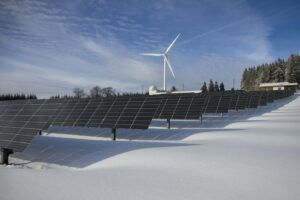
The connection between climate change and extreme weather events has shifted from theory to undeniable reality in recent years. 2025 is already a powerful reminder that a warming planet doesn’t just mean hotter summers—it means more destructive storms, intense rainfall, prolonged droughts, and deadly heatwaves. But how exactly does climate change “supercharge” our weather?
Warmer Air, Wetter Storms
One of the most direct consequences of global warming is that warmer air holds more moisture. For every 1°C increase in temperature, the atmosphere can hold about 7% more water vapor. This additional moisture fuels heavier downpours when storms form. For example, parts of the U.S. Midwest have experienced flash floods from rainfalls that were considered “once-in-a-century” events—now happening every few years. In April 2025, Cleveland saw a 4-inch rain in a single weekend, triggering flood watches and overwhelming infrastructure.
Hurricanes and Cyclones Are Growing Stronger
Ocean temperatures are also rising, and since warm water is the energy source for hurricanes, it’s no surprise we’re seeing more intense storms. The 2025 Atlantic hurricane season is forecasted to be 125% more active than average, according to researchers at Colorado State University. Warmer waters increase wind speeds, rainfall, and storm surge potential, turning what might have once been a Category 2 storm into a deadly Category 4.
Heatwaves: Hotter, Longer, Deadlier
Across the globe, heatwaves are becoming more frequent, intense, and prolonged. In Scotland, April temperatures have reached nearly 30°C—far above historical norms. Extreme heat can lead to serious health risks, particularly for vulnerable populations, and increases the likelihood of wildfires and drought.
Droughts and Water Scarcity
On the flip side of flooding, some areas are experiencing worsening drought conditions. Warmer temperatures increase evaporation rates, drying out soil and reducing water availability. That stresses agriculture, threatens food security, and forces changes in land use.
Tornadoes and Wild Swings
While tornadoes are complex and influenced by many variables, studies suggest that a warming climate may shift tornado activity into new regions and increase frequency in certain conditions. In early April 2025, nearly 100 tornadoes struck parts of the U.S. in a single day, causing fatalities and billions in damage—an event intensified by atmospheric instability linked to warming.
What Can Be Done?
While the science is clear, solutions are multifaceted. Reducing greenhouse gas emissions remains the most critical action. However, adapting to the new climate reality is just as important. This means updating infrastructure, improving early warning systems, investing in climate-resilient agriculture, and raising public awareness.
Final Thoughts
Climate change is no longer a distant threat—it’s here and reshaping the world’s weather patterns before our eyes. The data from 2025 makes it clear: the time to act, adapt, and prepare is now.


